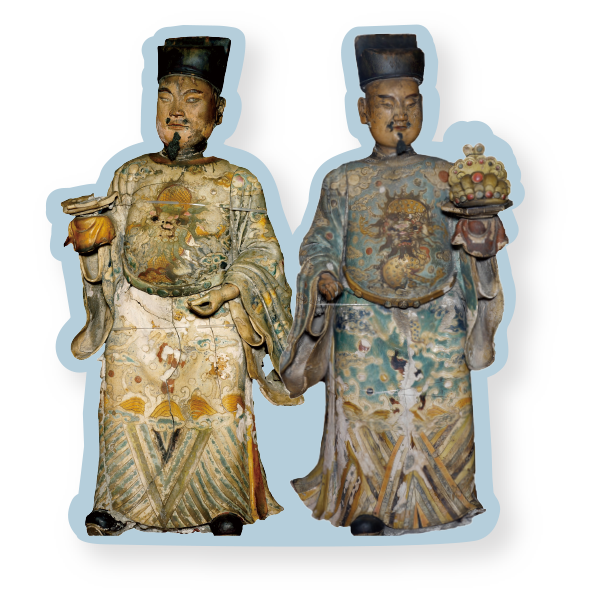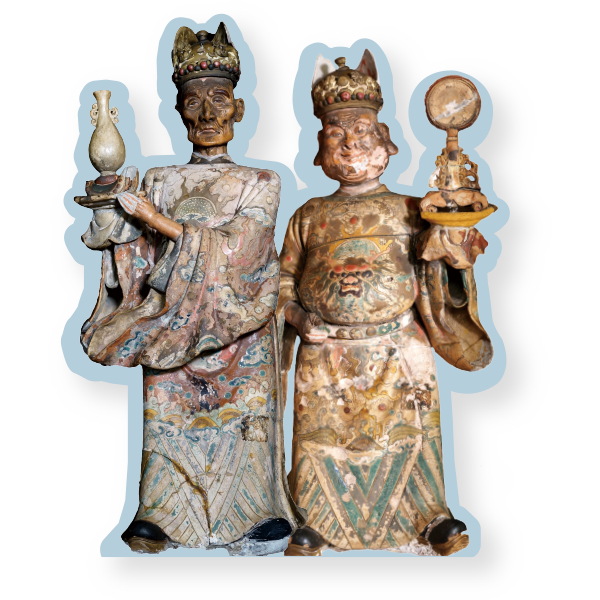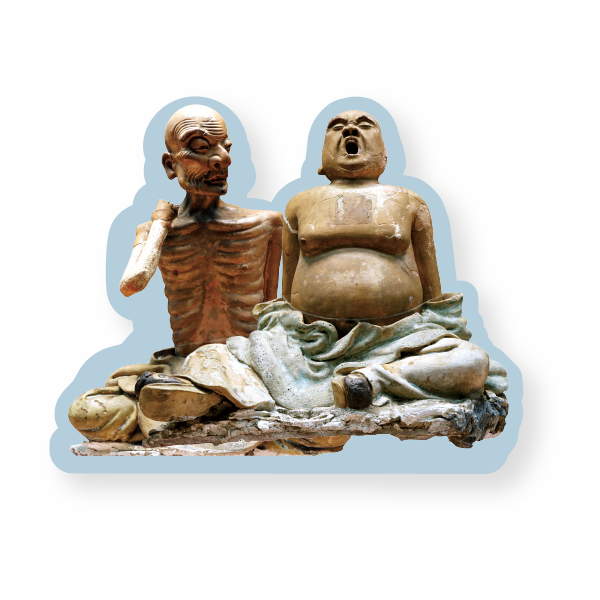Where Can You Find Koji Pottery?
Do you know those lively and expressive figurines called "ang-á" in Taiwanese temples? They're often seen on the roofs and walls of temples, decorated with colorful patterns of historical figurines, mythical creatures, and natural elements like flowers and fruits. These vividly colored pottery figurines are commonly known as "Koji Pottery" or "biōang-á" in Taiwan. Each koji pottery figurine is crafted based on folk stories, legends, and moral teachings, symbolizing blessings, good luck, and serving as educational tools. They have deeply influenced early Taiwanese society.
What is Koji Pottery?
Koji Pottery is a pottery technique that originated from the southern Fujian region of China and has a long history. In Taiwan, it can be traced back to over 200 years ago during the Qing Dynasty period when society was gradually prospering and stabilizing, and many temples were being built. Many Koji Pottery artisans from China brought their skills to Taiwan, creating colorful works to decorate temples and homes.
Who was Ye Wang?
Ye Wang, whose real name was Ye Lin-chih (1826-1887), was a renowned ceramic artist from Minxiong, Chiayi, during the late Qing Dynasty period. Because of his exceptional skill in sculpting, he was honored with the title "Master Ye." Ye Wang's works cover a wide range of subjects. His depictions of people are finely detailed, and the "Vermilion Red" glaze he used has a ruby-like texture, making it a distinctive feature of his works.
In 2014, the Ministry of Culture designated six pieces of Ye Wang's works (three pairs of figurines) as national treasures.
In 2014, the Ministry of Culture designated six pieces of Ye Wang's works (three pairs of figurines) as national treasures.
You Too Can Become a Connoisseur of Ye Wang's "National Treasures!"
-

"Advancement and Prosperity"
"Advancement and Prosperity" is one of Ye Wang's less common large-scale ceramic works. Originally placed at the front of a temple's main hall, it depicts door gods. One figure holds a crown, symbolizing "promotion," while the other raises a plate high with their right hand. Though the object on the plate is missing, according to old photos, there was once a deer on the plate, symbolizing "increase in salary." "Advancement and Prosperity" illustrates the pursuit of success and blessings in Han Chinese society. -

"Peace For All"
The official holding a bright mirror symbolizes "All," while the one holding a treasure vase and a saddle symbolizes "peace," praying for the peace and well-being of the worshippers in this land. The expressions and body movements of the figurines in the artwork are both vivid and lively. Their eyes and corners of their mouths show subtle changes, and their limbs and sleeves sway slightly. The details of their headdresses and clothes are finely depicted, presenting a realistic and divine style. -

"Fat Arhat" and "Skinny Arhat"
It is rumored that when Ye Wang was making Koji pottery for Xuejia's Ciji Temple, two villagers, one fat and one skinny, often came to observe the progress of the project. The relationship among these three became very good. To commemorate this friendship, Ye Wang created statues of "Fat Arhat" and "Skinny Arhat," both of whom are bare-chested. The "Skinny Arhat" has sunken eye sockets and cheeks, with prominent skull bones; the "Fat Arhat" yawning vividly depicts a plump figure and the texture of the skin.
The two men wear old clothes, contrasting sharply with the splendid attire of "Peace For All," reflecting the true state of life.